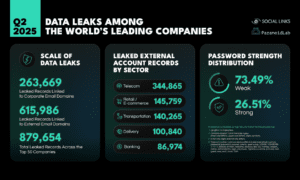Getting found online can make or break a rehabilitation center’s success. When someone searches for help with addiction or recovery services, you want your facility to show up first. That’s where search engine optimization comes in, and it’s not as complicated as you might think.
Understanding the Basics of Rehab SEO
Search engines like Google want to show the most helpful results to people searching for treatment options. Your job is to prove that your rehab center deserves that top spot. This means creating content that actually helps people, not just stuffing keywords into every paragraph.
The truth is, most people looking for rehab services are in crisis mode. They need clear information fast. If your website takes forever to load or uses confusing medical jargon, they’ll click away in seconds. Working with experienced rehab marketing professionals can help you avoid these common mistakes and create a website that actually converts visitors into admissions.
Local SEO Matters More Than You Think
Here’s something many rehab centers get wrong – they focus too much on ranking nationally and forget about local search. Most people want treatment close to home or in a specific location they’ve researched. When someone types “drug rehab near me” or “alcohol treatment in Miami,” you need to show up.
Start by claiming your Google Business Profile. Fill out every single field. Add photos of your facility that look welcoming, not clinical. Get reviews from former clients who are willing to share their positive experiences. These reviews build trust faster than any marketing copy you could write.
Your website should mention your city and surrounding areas naturally throughout the content. Don’t just stuff “Phoenix rehab center” fifty times on one page. Instead, talk about serving the Phoenix community, being located in the heart of Phoenix, or helping families throughout the Phoenix area. It reads better and works better.
Content That Actually Helps People
The best SEO strategy is simple – answer the questions people are actually asking. What does detox feel like? How long does treatment take? Does insurance cover rehab? Will I lose my job if I go to treatment?
These are real concerns that keep people from getting help. When you create blog posts, videos, or guides that address these worries honestly, you’re not just doing SEO. You’re providing a genuine service. Search engines reward this kind of helpful content with better rankings.
Think about the journey someone takes before calling your facility. They might search for symptoms first, then research different treatment types, then look for facilities in their area, and finally search for reviews or success rates. Your content should cover every stage of this journey. Many rehab marketing professionals recommend creating content clusters around these different stages to capture traffic at every point in the decision-making process.
Technical Stuff That Matters
Your website needs to load fast. Really fast. If it takes more than three seconds to load, you’re losing potential clients. People in crisis don’t have patience for slow websites, and Google knows this.
Make sure your site works perfectly on phones. More than half of all searches for rehab services happen on mobile devices. If your site isn’t mobile-friendly, you’re basically invisible to half your potential clients.
Use clear headlines that tell people exactly what they’ll learn in each section. Break up long paragraphs into shorter ones. Add images that are relevant and actually add value, not just generic stock photos of people looking thoughtful.
Building Trust Through Your Website
Your about page isn’t just filler content – it’s a trust-building opportunity. People want to know who’s running the facility. What are your credentials? Why did you get into addiction treatment? What makes your approach different?
Show photos of your actual staff, not stock images. Share real success stories with permission. Be transparent about your treatment methods and what a typical day looks like at your facility.
Trust signals matter for SEO too. Having an SSL certificate (the little lock icon in the browser) tells both visitors and search engines that your site is secure. Display any accreditations, licenses, or industry memberships prominently.
The Power of Link Building
Other websites linking to yours is like getting a vote of confidence in Google’s eyes. But not all links are created equal. One link from a respected medical journal or government health website is worth more than a hundred links from random directories.
How do you get good links? Create content worth linking to. Publish research about addiction trends in your area. Write comprehensive guides that other health professionals want to reference. Partner with local organizations and get listed on their resource pages.
Guest posting on reputable health and wellness blogs can work too, but only if you’re providing real value, not just trying to sneak in a link. The relationship with rehab marketing professionals often includes link-building strategies that focus on quality over quantity, helping you build a natural backlink profile that stands the test of time.
Tracking What Works
You can’t improve what you don’t measure. Set up Google Analytics and Google Search Console if you haven’t already. These free tools show you exactly how people find your website, what pages they visit, and where they drop off.
Pay attention to which keywords bring in actual phone calls and admissions, not just traffic. Getting a thousand visitors who immediately bounce is worthless. Getting fifty visitors who spend time reading your content and call your intake line is gold.
Look at your bounce rate – the percentage of people who visit just one page and leave. If it’s super high, something’s wrong. Maybe your content doesn’t match what people expected to find. Maybe your site is too slow. Maybe your call-to-action buttons are buried where nobody sees them.
Creating a Long-Term Strategy
SEO isn’t a one-time project. It’s an ongoing process of creating helpful content, earning quality links, and improving user experience. The rehab centers that rank highest in search results didn’t get there overnight. They’ve been consistently publishing valuable content and optimizing their websites for months or years.
Start with the basics. Make sure your website clearly explains who you help, what services you offer, and how to get started. Then build from there with blog posts, videos, and resources that address specific concerns.
Many facilities find that partnering with rehab marketing professionals gives them a competitive edge because these experts stay current with algorithm updates and industry best practices. They know what works right now, not what worked three years ago.
The bottom line is this – good SEO helps the people who need your services actually find you. It’s not about gaming the system or tricking search engines. It’s about being genuinely helpful and making sure that helpfulness is visible when someone’s searching for hope and healing.



































